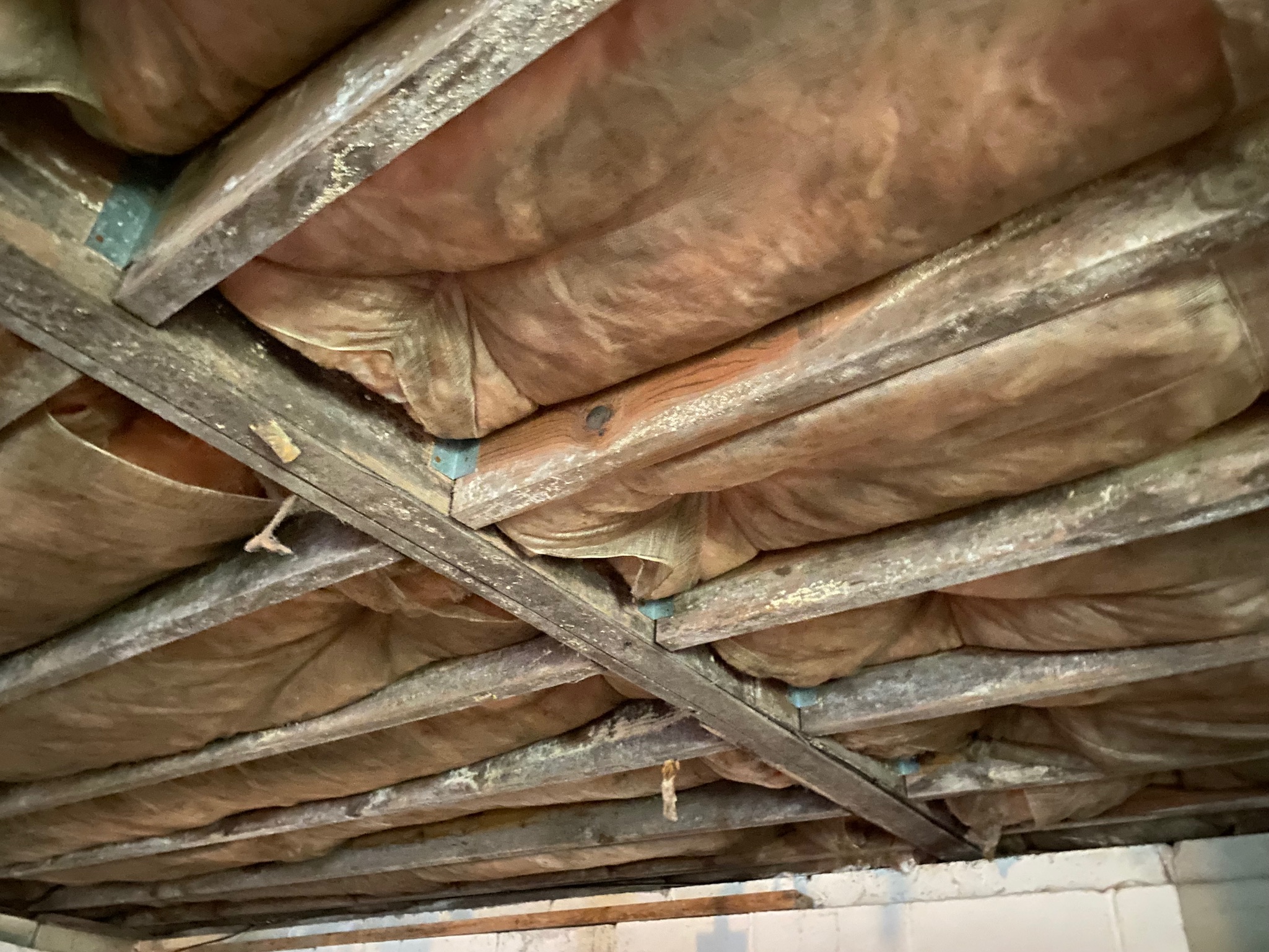
You’ve likely heard about the destructive power of water, but have you considered its impact on your home’s foundation? Moisture, over time, can saturate the soil around your foundation, resulting in hydrostatic pressure that weakens the structure. This pressure causes cracks, through which water seeps, eroding and destabilizing the foundation further. The freeze-thaw cycles can magnify these issues, leading to shifting and cracking that compromise your home’s structural integrity. If ignored, this seemingly innocuous issue can spiral into a major catastrophe. But how can you prevent this? Let’s explore the answers together.
Key Takeaways
- Water accumulation can lead to seepage into foundations, causing cracks and weakening structural integrity.
- Soil saturation from excessive water increases pressure on foundations, causing destabilization over time.
- Freeze-thaw cycles in colder climates can shift foundations, leading to weakening and possible failure.
- Moisture-induced cracks and mold growth, which thrive in damp conditions, further weaken foundation integrity.
- Ignoring water damage can escalate minor issues into major structural problems, increasing repair costs and posing safety hazards.
Understanding Your Home’s Foundation
To fully grasp how water damage weakens your foundation, you must first understand the basics of your home’s foundation. Your home’s foundation isn’t just a simple slab of concrete. It’s a complex structure that depends on the type of foundation and the stability of the soil it’s built on.
There are three basic types of foundations: slab, crawl space, and full basement. Slab foundations are exactly what they sound like, a slab of concrete that your home sits on. Crawl space foundations are raised off the ground, with a space between the ground and the home. Full basement foundations include a basement area.
The type of soil your house is built on also plays a crucial role. Soil stability refers to how well the soil can support the weight of your home. Some soil types, like clay, can expand or contract depending on moisture levels. This can cause your foundation to shift or crack, leading to potential water damage.
Understanding these factors is key to realizing how water can wreak havoc on your foundation. With this knowledge, you’ll be better equipped to protect your home.
The Role of Water in Foundation Damage
Now that you’re familiar with the basics of your home’s foundation, let’s explore how water plays its part in damaging it.
- Water Accumulation: When water collects around your home due to poor drainage solutions, it can seep into your foundation. Over time, this can cause serious damage.
- Soil Saturation: The soil around your foundation absorbs water. When it becomes too saturated, it expands and puts pressure on your foundation, leading to cracks and instability.
- Freeze-Thaw Cycle: In colder climates, the water in and around your foundation can freeze, expand, and then thaw, contracting again. This constant cycle can cause your foundation to shift, crack, and weaken over time.
It’s crucial to understand the role of water in foundation damage, and the importance of effective drainage solutions.
An oversaturated soil can be a silent destroyer of your home’s stability.
The freeze-thaw cycle, while more relevant in colder regions, can cause significant damage if left unchecked.
Signs of Water-Related Foundation Problems
You might be wondering, “What are the signs of water-related foundation problems?”
Keep an eye out for moisture-induced cracks, mold growth, and water pooling near your foundations.
These issues can act as clear indicators of underlying water damage that’s weakening your foundation.
Identifying Moisture Induced Cracks
Spotting moisture-induced cracks early on can save you a world of trouble when it comes to your home’s foundation.
But how do you identify these cracks, and what do they mean for your foundation?
Moisture detection is your first line of defense. Always be on the lookout for damp spots, condensation, or any signs of water intrusion.
If you’ve spotted these, it’s time to follow up with careful crack analysis.
Here are three important signs to look for:
- Horizontal Cracks: These are often a result of hydrostatic pressure and can indicate serious structural damage.
- Stair-Step Cracks: Common in brick or concrete block walls, these may signal water is eroding the wall’s base.
- Vertical Cracks: These are quite common and usually aren’t a major concern unless they start widening over time.
Mold Growth and Foundations
While it’s important to keep an eye out for moisture-induced cracks, another sign of water damage to your home’s foundation is mold growth. This pesky fungi thrives in damp conditions and can easily establish itself in the crevices and pores of your foundation.
Now, you’re probably wondering how mold affects your foundation’s health. The answer is quite simple. Mold growth can weaken the integrity of your foundation over time. It feeds on organic material, including certain types of concrete and wood, slowly chipping away at your home’s structural support.
Mold prevention is, therefore, a critical part of maintaining your foundation’s health. Regular inspections for mold are a must, especially in areas prone to high humidity or flooding.
If you spot any mold, don’t ignore it. Seek professional help immediately to remove the mold and address the underlying moisture issue.
Water Pooling Dangers
One overlooked, yet critical, sign of water-related foundation problems is the presence of water pooling near your home. This seemingly harmless scenario might be a warning of a more serious issue lurking beneath your property’s surface.
Here are three significant impacts of water pooling:
- Structural Damage: When water pools, it seeps into your foundation, causing it to crack, crumble and ultimately weaken.
- Mold and Mildew: Standing water provides a perfect breeding ground for mold and mildew, which can cause health problems and further damage to your home.
- Decreased Property Value: Once your foundation is compromised, it’s not just your home’s structural integrity at risk, but also its market value.
But don’t despair. There are drainage solutions to mitigate these risks.
How Water Weakens Concrete Over Time
Over time, water can become your concrete’s worst enemy. Continual exposure to moisture doesn’t just mar its appearance, but it also causes concrete deterioration. This isn’t something you’d notice over a day or a week, but it gradually eats away at your foundation.
Moisture intrusion is the silent culprit. It’s as if water has a secret pact with gravity and together, they infiltrate even the tiniest of pores in your concrete. Once inside, they expand and contract with temperature changes.
Slowly but surely, these tiny changes in volume start to weaken the concrete’s internal structure, causing cracks and fissures. You might think it’s just a small crack, nothing to worry about, but that’s just the tip of the iceberg.
Water inches its way deeper, exploiting these cracks and expanding them further. Over time, these minor issues pile up. Your concrete isn’t as solid as it once was. It’s become porous, brittle, and weak.
It’s lost its strength and structural integrity, all because of water’s relentless attack. So, don’t underestimate the power of water. It’s a silent destroyer, steadily weakening your concrete over time.
Potential Consequences of Ignored Water Damage
Ignoring water damage might seem like an easy out, but it’s a decision you’ll regret.
Let’s delve into the ignored consequences of water damage to your foundation.
- Structural Integrity Compromise: Water weakens the structural integrity of your foundation over time. It seeps into the pores of the concrete, causing it to crack, crumble, and eventually fail.
This could lead to a structural collapse.
- Mold Growth: Moisture from water damage creates a perfect environment for mold growth.
Mold not only damages your structure further but can also cause health issues, such as allergies and respiratory problems.
- Decreased Property Value: Ignoring water damage can significantly decrease your property’s value.
Potential buyers are likely to spot signs of water damage and may back out of the purchase or demand a reduced price.
Don’t underestimate the consequences of ignored water damage.
The structural integrity of your house could be at risk, your health may get compromised, and your property’s worth could plummet.
Addressing water damage should be a priority to maintain a safe and healthy home.
Prevention: Essential Foundation Maintenance Tips
Now that you understand the risks, let’s talk about prevention.
Regular foundation inspections and effective moisture management are your best defenses against water damage.
In the following section, you’ll learn the ins and outs of these essential maintenance strategies.
Regular Foundation Inspections
While you mightn’t think much about it, regular foundation inspections are a crucial part of maintaining your home’s integrity.
They’re the key to spotting potential issues before they morph into costly repairs, and they’re absolutely vital for homes of all foundation types.
Here’s why you can’t afford to skip them:
- Different Foundation Types Have Different Needs: Whether you’ve got a slab, crawl space, or basement foundation, each type has unique vulnerabilities.
Regular inspections help tailor your maintenance plan to your foundation type.
- Early Detection Saves Money: The sooner you catch a problem, the cheaper it’ll be to fix.
Regular inspections let you spot minor issues before they become major ones.
- Inspection Frequency is Crucial: Experts recommend at least an annual foundation checkup.
However, in areas prone to heavy rain or seismic activity, you may need more frequent inspections.
Effective Moisture Management
A staggering amount of foundation damage can be prevented with effective moisture management. You see, controlling the amount of moisture that reaches your home’s foundation is a critical part of its long-term health. Too much water can lead to the soil expanding, cracking, and exerting pressure on your foundation.
So, what’s the most effective way to manage moisture?
Firstly, install robust drainage systems. Well-designed gutters and downspouts direct water away from your home, reducing soil saturation near the foundation. Invest in good quality systems and ensure they’re regularly cleaned and maintained.
Secondly, pay attention to humidity control, especially in crawl spaces and basements. These areas can become moisture traps, contributing to foundation weakening over time. Dehumidifiers, vapor barriers, and proper ventilation can help in reducing humidity levels.
Lastly, don’t forget about landscaping. Proper grading can help steer water away from your home.
Plants, too, can be both an ally and a foe. Some absorb water, helping to keep the soil dry, while others with invasive roots can cause damage.
Professional Inspection and Repair Options
You might feel overwhelmed by the idea of dealing with water damage to your foundation. But don’t worry, there are professional inspection services and foundation repair options available to help you.
- Inspection Services: Certified professionals will thoroughly inspect your foundation for any signs of water damage. They’ll use special equipment to detect dampness, cracks, and any structural shifts that might indicate water damage.
- Foundation Repair: If water damage is detected, repair options vary. They may seal cracks, install drainage systems, or suggest more extensive procedures if damage is severe.
They’ll provide a detailed plan tailored to your home’s needs.
- Maintenance Plan: After repairs, many companies offer maintenance plans. These can include regular check-ups and preventative measures to avoid future damage.
Long-term Benefits of Water Damage Mitigation
Should you choose to invest in water damage mitigation, you’ll soon notice its long-term benefits. It’s not just about immediately fixing the damage; it’s about future-proofing your home.
One of the main advantages is cost savings. You might balk at the upfront cost of mitigation, but consider the alternative. Without it, water damage continues to weaken your foundation, leading to more extensive repairs down the line.
In the worst-case scenario, you could even face a complete rebuild. So, while it might seem like a hefty expense now, it can save you a lot in the long run.
Another long-term benefit is the potential increase in property value. A well-maintained home is a valuable home, and that includes the foundation.
Frequently Asked Questions
Does Homeowners Insurance Typically Cover Water Damage to the Foundation?
Typically, your homeowner’s insurance may cover water damage to your foundation, but it depends on your policy’s coverage limits and exclusions.
It’s important to check your policy details to understand what’s covered.
Remember, insurance usually doesn’t cover damage due to neglect or lack of maintenance.
So, if water damage results from a neglected leak, you might end up footing the bill yourself.
Always maintain your home to avoid such situations.
How Often Should I Inspect My Foundation for Water Damage?
You should inspect your foundation for water damage at least four times a year, following each season.
Seasonal inspections help catch issues early. Be on the lookout for warning signs such as cracks, mold, or dampness. These can indicate water damage.
Can Landscaping Choices Impact the Risk of Water Damage to My Foundation?
Absolutely, your landscaping choices can significantly impact the risk of water damage to your foundation.
Certain drainage solutions, like installing a French drain, can redirect water away from your home.
Also, consider the soil grading around your house. It should slope away to prevent water from pooling.
You’re not just creating a beautiful yard, you’re also protecting your home’s foundation.
Is It Safe to Live in a House With Water-Damaged Foundations?
It’s not safe to live in a house with water-damaged foundations.
Water damage weakens your home’s structural integrity over time, making it unsafe.
You’re also exposed to health risks such as mold and mildew growth.
It’s crucial to address these issues promptly to ensure your home remains a safe and healthy place to live.
Don’t neglect potential water damage – it’s more serious than you might think.
How Long Does It Typically Take to Repair Water-Damaged Foundations?
Wondering how long it’ll take to repair water-damaged foundations?
It’s not a quick fix. Typically, it takes anywhere from a few weeks to several months. The time frame depends on the extent of the damage, repair methods used, and the type of foundation.
Conclusion
Don’t underestimate the damage water can inflict on your foundation over time. Regular checks and proactive moisture management are key in preventing costly repairs. Take note of any signs of water-related problems and act promptly. Engage professionals for inspection and repairs. Remember, mitigating water damage not only preserves the structural integrity of your home but also maintains its market value. Don’t put your home’s safety and livability at risk – protect your foundation now.

Seal-tite Basement Waterproofing Co. is a full service basement environment contractor. We carry an A+ Better Business Bureau rating. We repaired over 40,000 homes and structures in Virginia, West Virginia, Tennessee, and North Carolina. We are fully insured and licensed. We have worked in all types of locations, including residential and commercial locations, government agencies, colleges, hospitals, churches, and condo associations.
Seal-tite® offers a lifetime transferable warranty. We carry a Class A Contractor’s License and we are fully insured. Our satisfied customers range from government agencies to businesses, hospitals, colleges, churches, and thousands of homeowners. Your home is probably the single largest investment you will make in your lifetime. Don’t wait, call Seal-tite® to help make your home dry, safe and livable.

